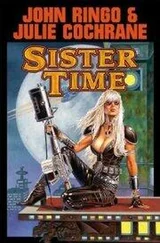Mme. Lefébure’s studio was a few blocks from her apartment. To reach it one walked down a sinister back alley to a derelict building (where a truly frightening woman would answer the doorbell and let us in, babbling nonsense and shaking her head a lot), up a staircase which looked ready to collapse at any moment, and then through an antechamber into a large, surprisingly pleasant room where Madame had her two pianos and held court. It was heated by a small coal stove, and in the winter was very dark but somehow quite cozy.
Every lesson was exciting and dramatic, and she would keep me sometimes for three or four hours at a stretch. I felt as though I were a character in a play or a Proustian novel – I was the nervous but devoted student anxious to glean every grain of knowledge I could from her superior mind, and she played the part of the revered, flamboyant teacher to perfection. The lessons were a mine of precious information, but they were also high entertainment.
Part of the great attraction was the anticipation of her occasional, totally outrageous personal comments. It was when I was playing for her the “Sonatine” of Ravel that she told me she had worked on this very piece with Ravel himself. She had also, apparently, given him pointers on how to improve on it, which she assured me he gratefully accepted and used. “Mais naturellement, je n’étais qu’une toute jeune fille!”2 she added hastily.
And then the name of Dinu Lipatti came up one day and I mentioned how much I enjoyed listening to the recording of his last recital. “Mais ma chérie,” she exclaimed, “les disques de Dinu Lipatti, eh bien, c’est moi!”3 and proceeded to explain that he had been very sweet and charming but had basically not a clue how to play the piano and that she had taught him every single note. Of course, she fully believed what she was saying, which made it all the more fun.
And there was the time when, exhausted after a day’s work and suffering from the onset of arthritis in her arms and hands which clearly gave her considerable pain, she dramatically took Biddy’s hand, telling her that she could confide in her because she was like her petite soeur;4 then she added, her eyes misting over with emotion and speaking in a voice theatrically tinged with a sense of destiny and an unearthly, distant quality: “Tu vois, ma chère Bridget, quand je passerai,” here there was a tremulous sigh as she closed her eyes and bowed her head, “il faudra que j’aie laissé quelque chose de moi au monde; c’est pourquoi je donne tellement à ces deux chouchoux.”5 The two chouchoux were myself and the English pianist, Martin Hughes, who was her special favourite. Martin had masses of temperament and fire and was ferociously committed to music and the piano. He was also highly amused by Madame Lefébure, although we were both devoted to her. She enjoyed pitting us against each other. When I first arrived, she would tell me in hushed tones, while he was playing, that he had only started playing the piano two years previously (totally untrue, of course) and that at the extraordinary pace he was developing, he was sure to surpass all his colleagues. To Martin, she said that I had learned Liszt’s “Mazeppa” (a piece I had learned when I was fourteen and had worked on sporadically for the next three years) in exactly eight days. Both Martin and I eventually found out the truth, but not before we had suffered many days of despair at our own ineptitude and insignificance.
There were wonderful times as well in that dimly lit room, when her four best students at that time would have lessons together. Imogen had already left her class to go to Vienna, but there would be Martin, myself, a beautiful Bulgarian girl named Roumiana Athanassova, who had a magnificent fluid technique and delicate musicality, and Ray Luck, a marvellous Guyanese pianist of Chinese descent, whom Madame Lefébure kept introducing to the world as Monsieur Ray Luck, “Bree-teesh subject,” and poor Ray had to endlessly correct her, as Guyana had shed its colonial past several years earlier. The four of us would take turns playing, and the lessons would go on all night. Even though, in retrospect, there were musical ideas Madame Lefébure imparted to us that probably would no longer coincide with my own, she had such energy and such a passion for teaching and for music that her lessons were both irresistible and inspiring. She was immensely theatrical but could perform Bach beautifully, with an extraordinary facility for differentiating all the voices, and also play with tremendous intensity, which was most impressive in works such as the late Beethoven sonatas. But her approach to music was also rather intellectual, a bit cold, and her teaching dealt often in abstracts. Her sound had a crystal-like clarity, but there was no lushness to it, no particular warmth or lyricism. However, it was gripping, and she produced fantastically varied colours with wonderful textures and layers of sound. Her Debussy and Ravel were delightful, and she was compelling to listen to, whether one agreed with her interpretations or not.
I suppose what I learned most from that year with her in Paris was a level of dedication and respect for music heretofore unknown to me. What I also found in Paris during the 60s was that an artist who was mainly a teacher, such as Mme. Lefébure, was not only revered and respected by the music community, but also considered an essential and important figure in the make-up of French society. It seemed likely that Mme. Lefébure’s name would be familiar not only to the upper classes or the educated bourgeoisie, but to the local shopkeepers as well. In North America at that time, a great piano teacher or concert pianist (other than Paderewski or Van Cliburn) was barely known outside of a very elite group and, even in that group, might be considered something out of the ordinary, a luxury or somehow a bonus to society. Mme. Lefébure showed me how, in Europe at that time, a musician of her stature was certainly treated like royalty, but no more so than a great scientist or doctor; the values of their respective professions were basically regarded as equal. I was also highly influenced by the level of intense commitment I felt around me in the class. And to this day when I perform certain pieces of French music, or even a piece like the Beethoven 4th piano concerto, I recognize certain important “Lefébure aspects” – voice differentiation, crystal clarity, intensity throughout and amazing fingerings – which were drilled into my subconscious so many years ago.
Madame Lefébure was also a delightful snob, and it pleased her no end that her pupil Gersende de Sabran, a lovely girl with a very respectable talent, was engaged to be married to one of the Comte de Paris’ sons. For a people who had suffered through a gloriously bloody revolution, chopping off the heads of all the aristocrats they could lay their hands on, it was amazing to see such a passion for titles and such a preoccupation with the goings-on of the descendants of the various pretenders to the throne. Never was Madame happier than when young Jacques de France would show up at Gersende’s lessons, and she would welcome him with the words: “Ah! Mon petit prince charmant, quel bonheur que vous soyez là.”6 Gersende, meanwhile, would roll her eyes heavenward.
Madame decided to put on a recital at the Salle Gaveau; we were all to play, and it would be entitled, with typical modesty, “An evening with the disciples of Yvonne Lefébure.” Madame told us that she needed an opening piece because, even though the concert was scheduled for 8:30 pm, and wouldn’t actually begin until 8:55, she still feared that people would start turning up only around 9:00 (she was quite right; in fact, that was the accepted way in Parisian concerts at that time!). So Gersende and I were to open with the “Valses Romantiques” of Chabrier for two pianos, four hands, which was great fun. Then I was to play the Brahms-Handel Variations. Madame didn’t like Brahms, (and she despised Wagner, although one wonders how much Wagner she had actually heard in her lifetime, and if this anti-Wagner stand was just a position certain French musicians of her era automatically took), but Martin and I were, at ages eighteen and seventeen, very attracted to the lush dark romanticism of Brahms; Martin was learning the d-minor concerto, which I used to accompany – marvellously passionate stuff. Anyhow, Mme. graciously allowed me to learn the Variations and at lessons, while she was demonstrating passages to me, she would become quite seduced by the music and moan in delight: “O! La vieille Allemagne! Freddy, je joue Brahms tellement bien! Vraiment, je devrais le jouer bien plus souvent!”7
Читать дальше












